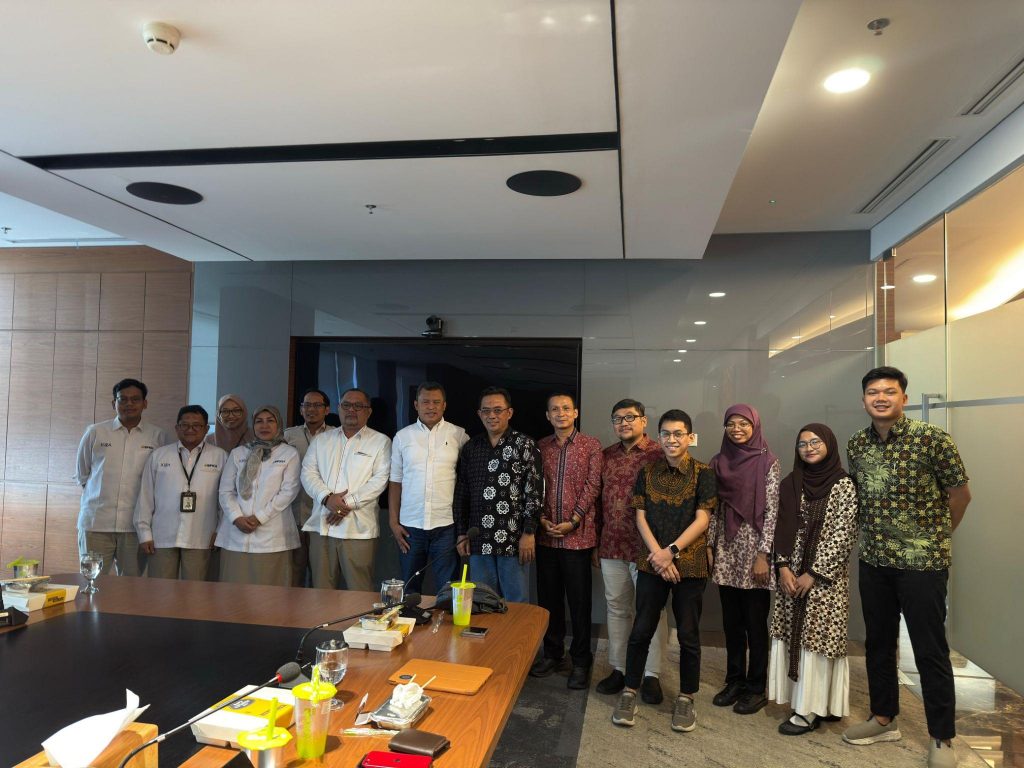 Jakarta — Universitas Gadjah Mada (UGM) and the Hajj Financial Management Agency (BPKH) have launched a Kick-Off Meeting for a study on Future Asset, Future Liabilities, and Financial Modeling to Support Hajj Financial Sustainability. The event was held on Monday, May 5, 2025, at the BPKH Office, Muamalat Tower, Jakarta.
Jakarta — Universitas Gadjah Mada (UGM) and the Hajj Financial Management Agency (BPKH) have launched a Kick-Off Meeting for a study on Future Asset, Future Liabilities, and Financial Modeling to Support Hajj Financial Sustainability. The event was held on Monday, May 5, 2025, at the BPKH Office, Muamalat Tower, Jakarta.
The event opened with remarks from Prof. M. Arief Mufraini, Member of the BPKH Executive Board for Direct and Other Investments, Planning, Research, and Development, followed by Dr. rer. nat. Wiwit Suryanto, S.Si., M.Si., Vice Dean for Research and Collaboration at UGM’s Faculty of Mathematics and Natural Sciences (FMIPA). The event was also attended by Prof. Fajar Adi Kusumo, S.Si., M.Si., Vice Dean for Alumni, Partnerships, and Innovation, as well as Dr. Nanang Susyanto, M.Sc., M.Act.Sc., Head of the Department of Mathematics, FMIPA UGM. The study plan was presented by Danang Teguh Qoyyimi, M.Act.Sc., Ph.D., ASAI, as Project Leader, along with his team.
This session marked the beginning of a collaborative effort between UGM and BPKH to address the strategic challenges of ensuring the long-term financial sustainability of Indonesia’s Hajj fund. One of the main challenges faced by BPKH is maintaining financial sustainability amidst an annual subsidy policy that provides additional benefits to Hajj pilgrims. This policy arises due to the gap between the amount paid by prospective pilgrims (Bipih) and the actual Hajj Operational Cost (BPIH). The difference has been covered through investment returns on Hajj funds managed by BPKH.
However, if investment returns are insufficient to cover the subsidy amount, a mismatch between assets and liabilities may occur, potentially depleting pilgrims’ funds. For this reason, a thorough and comprehensive study is needed to maintain a long-term balance in Hajj financial management.
To date, sustainability calculations have been based on assumptions such as an average annual increase of 5.63% in Bipih, 3.66% in BPIH, and a 7% investment return rate. However, previous studies have not fully accounted for the unit cost per pilgrim or comprehensive projections of future assets. To address this, the latest study will employ a more holistic approach, including scenario-based financial modeling and asset-liability balance analysis.
Through this collaboration, UGM and BPKH aim to produce strategic recommendations to support policy formulation on BPIH, initial deposit amounts, and more targeted investment strategies, thereby ensuring the long-term financial sustainability of Hajj implementation.

 Keywords: Hajj Financial Sustainability, Asset and Liability Modeling, Hajj Financial Management Agency (BPKH)
Keywords: Hajj Financial Sustainability, Asset and Liability Modeling, Hajj Financial Management Agency (BPKH)
Author: Iin Nauli Rahmawati
Photographer: Fathan Rasyid Rahmadhan
